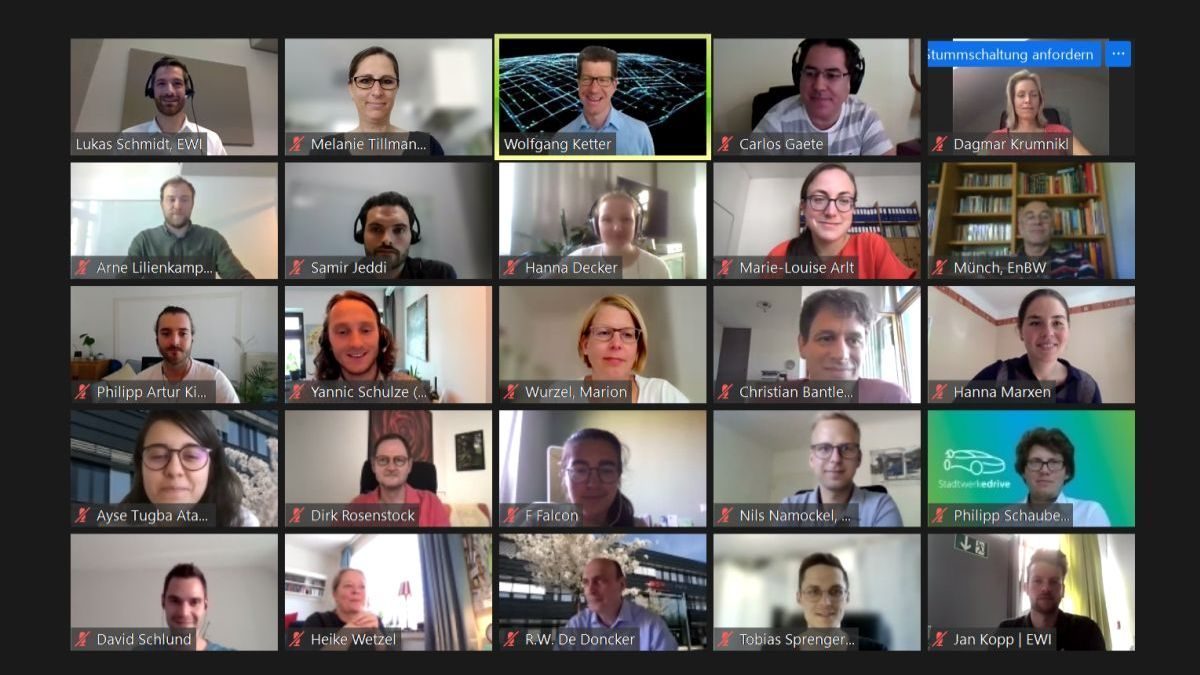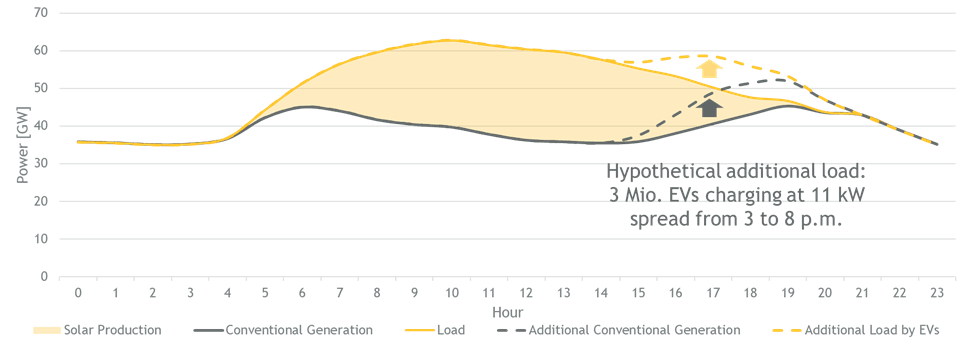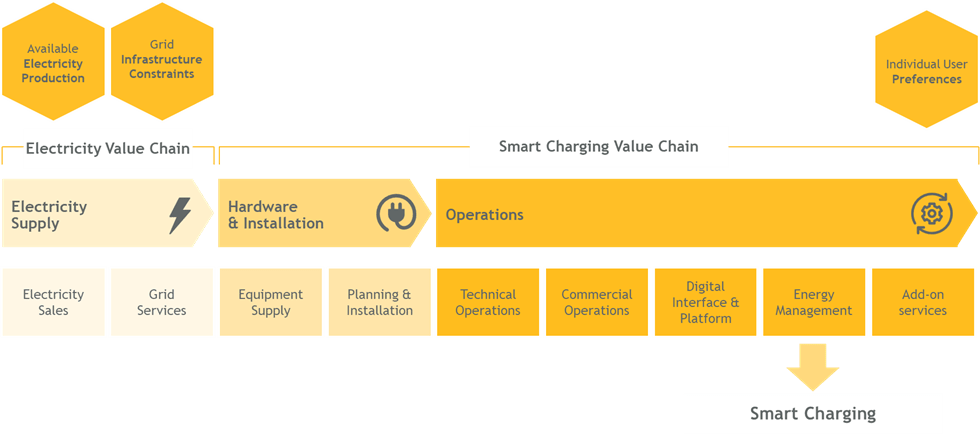
The number of electric vehicles will have to increase significantly over the next decade to meet climate protection targets – and it probably will: the German government and the “National Platform for the Future of Mobility” expect 7 to 14 million electric vehicles on German roads by 2030. The challenges arising from this and possible solutions were the subjects of the EWI Insights event, moderated by EWI manager Dr. Lukas Schmidt.
“Significantly more electric cars means significantly more charging and therefore significantly more electricity demand.” said Arne Lilienkamp, Research Associate at EWI. The different requirements of those who use mobility and an energy supply with as few emissions as possible result in the so-called “charging trilemma”, he says:
To mitigate the charging trilemma, three dimensions need to be coordinated: Stakeholders, time, and space

Stakeholders can be divided into the following groups:
Infrastructure operators primarily want to refinance investments and avoid peak loads. Mobility-first stakeholders, on the other hand, primarily want end users to be as mobile as they want to be. This leads to a conflict of interests between the two groups.
This is currently evident, for example, in the debate surrounding the issue of peak curtailment and the amendment of §14a EnWG. This section of the Energy Industry Act (EnWG) regulates the use of controllable consumption devices in low-voltage systems. An initial draft of the amendment stated that distribution system operators should be given the option of restricting the charging of electric vehicles in a maximum of two hours per day. However, the plan met with criticism, particularly from vehicle manufacturers, and was initially rejected.
The temporal and spatial components of the coordination task arise from the (limited) availability of electricity from renewables; thus, they primarily affect energy suppliers. Their challenge is illustrated by the concept of the so-called “Duck Curve”. The “Duck Curve” maps the necessary generation output of conventional power plants within a day and reflects the divergence between peak loads and the feed-in of electricity from renewables. It is named after its distinctive shape, which is reminiscent of a duck.
The problem: If electric vehicles are charged exclusively at home, for example, after returning from work, the demand for electricity increases when the feed-in from renewables, primarily solar, is already declining. This necessitates rapid additional conventional generation. This works against the goal of charging electric vehicles primarily with electricity from renewables.

The spatial component is exacerbated by grid bottlenecks: the system-optimal charging process depends on whether the charging process is to be carried out upstream or downstream of a grid bottleneck, i.e., in regions of electricity surplus or shortage. When there is too much power available, additional charging is optimal; when there is too little power, charging should be done as little as possible.
However, the interests of the various stakeholders are only at first glance conflicting. The “smart charging” value chain links up with the energy industry value chain and builds a bridge to user preferences. In this way, it makes it possible to align interests with one another. Here, the management of charging behavior (“smart charging”) plays a vital role.
Smart charging is the ability to adapt charging behavior to external signals. This can be done in three dimensions: the speed of charging (“load shaping”), the time of charging (“load shifting”), and the direction of charging each play a role. In practice, it can be observed that these dimensions are already implemented in different degrees/stages. The choice of the degree of implementation depends on the particular case:

“The integration of the electric vehicle fleet into the overall system is a coordination task. To master this, an exchange between science and practice is important,” says Prof. Wolfgang Ketter, Director at the EWI and Chair of “Information Systems for Sustainable Society” at the University of Cologne. This could help identify and develop new business areas along the smart charging value chain. They could help defuse the charging trilemma and reconcile the different interests of the stakeholders involved.